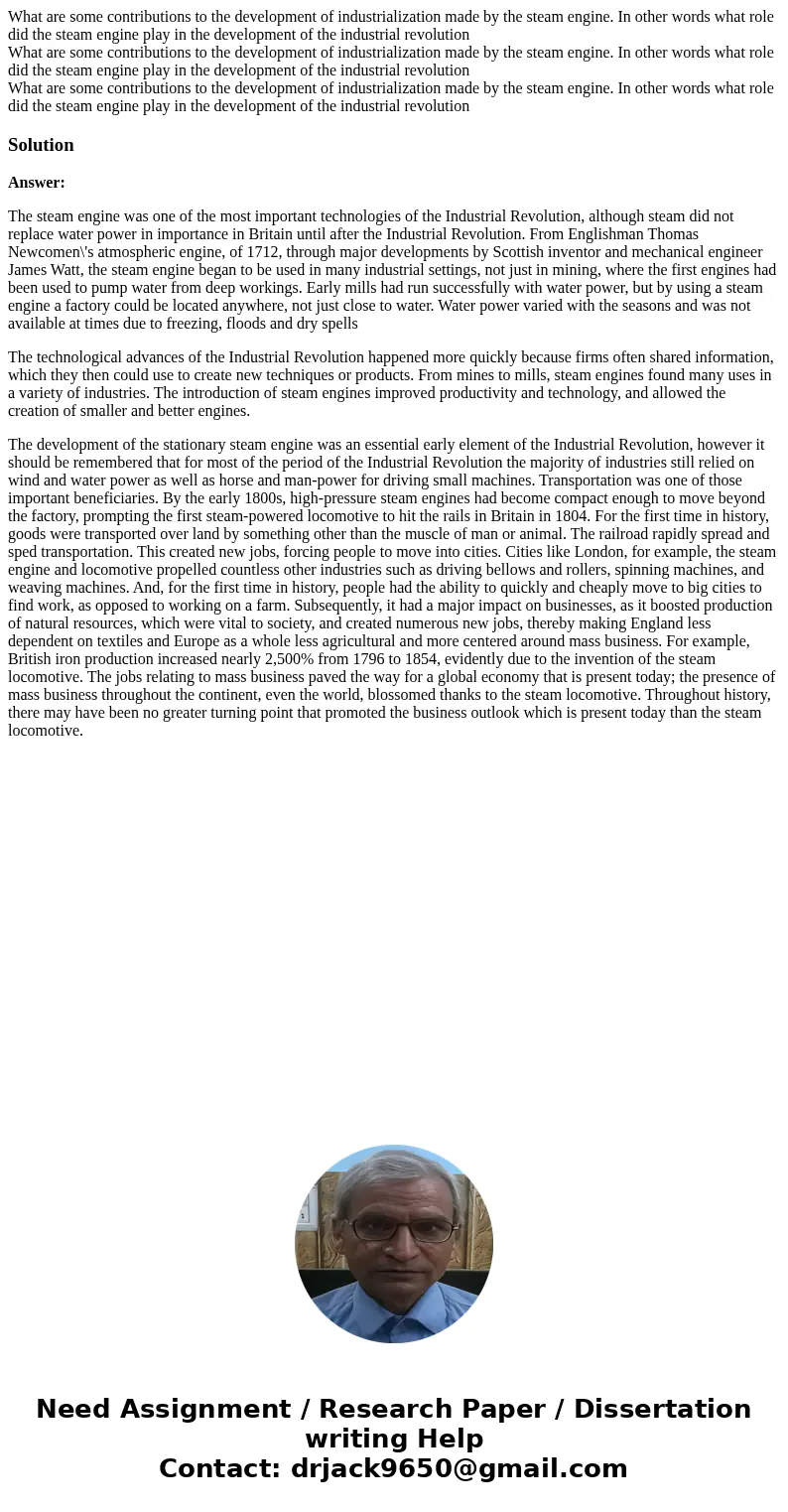What are some contributions to the development of industrial
Solution
Answer:
The steam engine was one of the most important technologies of the Industrial Revolution, although steam did not replace water power in importance in Britain until after the Industrial Revolution. From Englishman Thomas Newcomen\'s atmospheric engine, of 1712, through major developments by Scottish inventor and mechanical engineer James Watt, the steam engine began to be used in many industrial settings, not just in mining, where the first engines had been used to pump water from deep workings. Early mills had run successfully with water power, but by using a steam engine a factory could be located anywhere, not just close to water. Water power varied with the seasons and was not available at times due to freezing, floods and dry spells
The technological advances of the Industrial Revolution happened more quickly because firms often shared information, which they then could use to create new techniques or products. From mines to mills, steam engines found many uses in a variety of industries. The introduction of steam engines improved productivity and technology, and allowed the creation of smaller and better engines.
The development of the stationary steam engine was an essential early element of the Industrial Revolution, however it should be remembered that for most of the period of the Industrial Revolution the majority of industries still relied on wind and water power as well as horse and man-power for driving small machines. Transportation was one of those important beneficiaries. By the early 1800s, high-pressure steam engines had become compact enough to move beyond the factory, prompting the first steam-powered locomotive to hit the rails in Britain in 1804. For the first time in history, goods were transported over land by something other than the muscle of man or animal. The railroad rapidly spread and sped transportation. This created new jobs, forcing people to move into cities. Cities like London, for example, the steam engine and locomotive propelled countless other industries such as driving bellows and rollers, spinning machines, and weaving machines. And, for the first time in history, people had the ability to quickly and cheaply move to big cities to find work, as opposed to working on a farm. Subsequently, it had a major impact on businesses, as it boosted production of natural resources, which were vital to society, and created numerous new jobs, thereby making England less dependent on textiles and Europe as a whole less agricultural and more centered around mass business. For example, British iron production increased nearly 2,500% from 1796 to 1854, evidently due to the invention of the steam locomotive. The jobs relating to mass business paved the way for a global economy that is present today; the presence of mass business throughout the continent, even the world, blossomed thanks to the steam locomotive. Throughout history, there may have been no greater turning point that promoted the business outlook which is present today than the steam locomotive.

 Homework Sourse
Homework Sourse